
Oak Alley Plantation Tour Near New Orleans
When deciding which plantation tour is the best in New Orleans, Oak Alley should definitely be on your list for the photography alone. I would also include the Laura Plantation for the French History of Louisiana, and the Destrehan Plantation for a tour with a slave descendant that amplifies the black voices of slaves and marginalized societies along the German Coast.
Pictures of the famous Oak Alley Plantation grace nearly every page when talking about Louisiana Plantations. Oak Alley once got a bad rap for focusing on the gorgeous architecture that once had it nicknamed Le Petite Versailles by French locals. Over the last few years, they have focused on balancing the tour of the big house and the slave quarters. More education is being provided about the life of slaves on this plantation, the owners and their involvement in the slave trade, and the brutal conditions of working on a Sugar Plantation.
Quick Facts About Oak Alley Plantation
Location: 25 miles away from New Orleans.
Transportation: Grayline bus does service the area and does have tours available. You can also find some good Viator tours to the area as well that are often combined with a swamp tour. I still would suggest renting a vehicle or take an uber out to the plantation and staying the night. There is a lot to see and if you are a history buff like me, you won’t want to be rushed. Just be aware that Uber will take you to the Plantation but they do not service the area for the drive back.
Best Time To Visit: Spring and Fall are the best time to visit Oak Alley purely because of the weather. If you try to visit in April just be aware Mardi Gra will sell out hotels within 50 miles of New Orleans. If you visit in September you are going to run into Hurricane season.
Can You Tour On Your Own? answer

How much does a tour cost? Children are $7 and adults are $25 dollars. The tickets do sell out quickly because it is a major destination for cruise ship buses and can get quite crowded.
How Long To Stay: There are so many fantastic plantations to see along the Louisiana River Parishes like the Laura Plantation with the French history and intrigue, you have Destrehan Plantation with the best tour for Black History, and of course Oak Alley for the gorgeous setting and a chance to stay in one of the charming cabins.
What movies were filmed at Oak Alley? Interview with a Vampire, Midnight Bayou, Ghost Hunters, Beyoncé's ‘Deja Vu’, Hush Hush Sweet Charlotte, Night Rider and many more
Accessibility: There is one step into the Oak Alley Plantation, with a ramp available to get past the one step. Once on the main floor there are several rooms you can easily tour. There are 22 steps to the upper floor and it is a quite steep staircase, if you have heart or lung issues you may want to stay on the main floor. They do have an iPad available for those unable to get to the 2nd floor that will take you through each of the rooms (or just watch my video ;).
Current Owner: Oak Alley Foundation a gift from Josephine Stewart the last owner of the Oak Alley Plantation cattle ranch.
Type of Plantation: Oak Alley was once a Sugar Plantation, but they also grew cotton and tobacco.
How Big Is Oak Alley? This Plantation is 25 acres with 11,500 sq ft in the Big House. The original plantation had 1,200 acres of farmland to grow Sugarcane.

Places to Stay in Near Oak Alley
While I typically try to use something like Charistay or Kind Traveler to book a more sustainably minded hotel. I wanted to give some specific options of a luxury, budget, and dog-friendly place to stay while visiting Louisiana River Parishes that looked interesting to me including the hotel I stayed at while visiting.
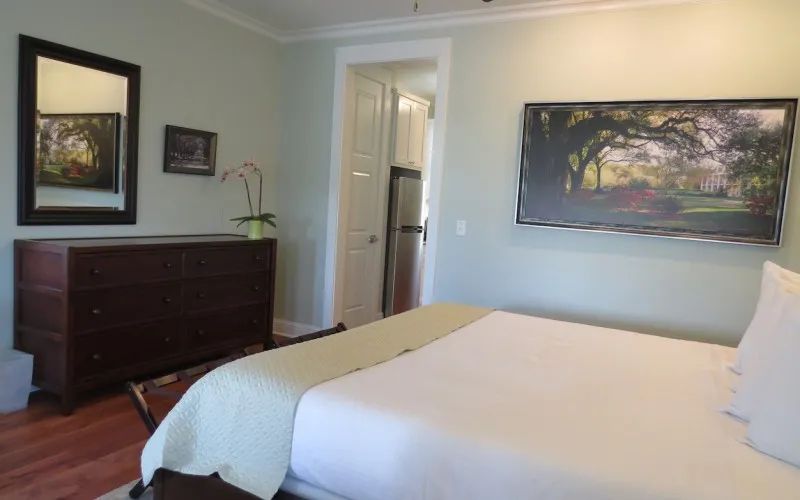
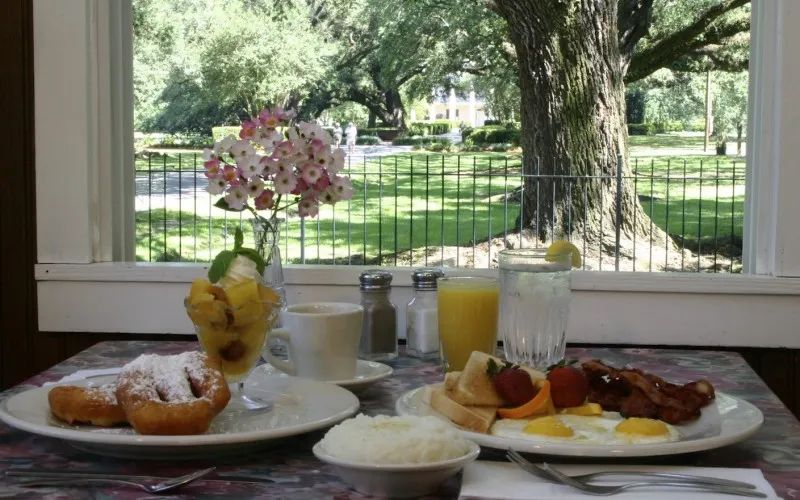

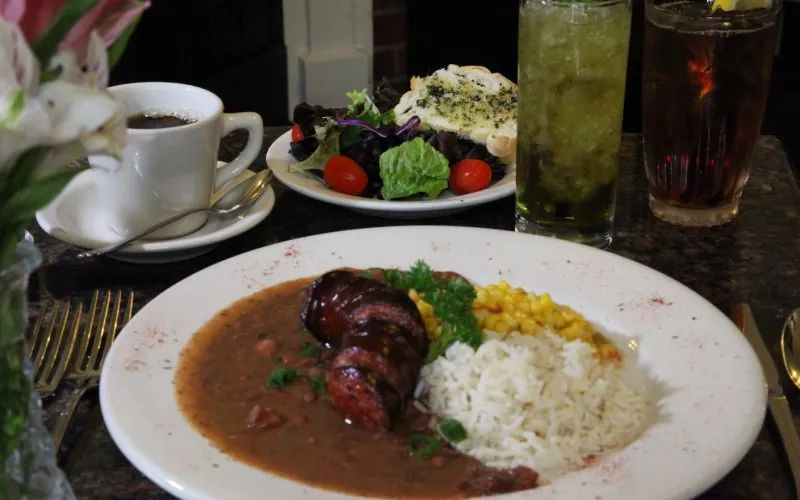
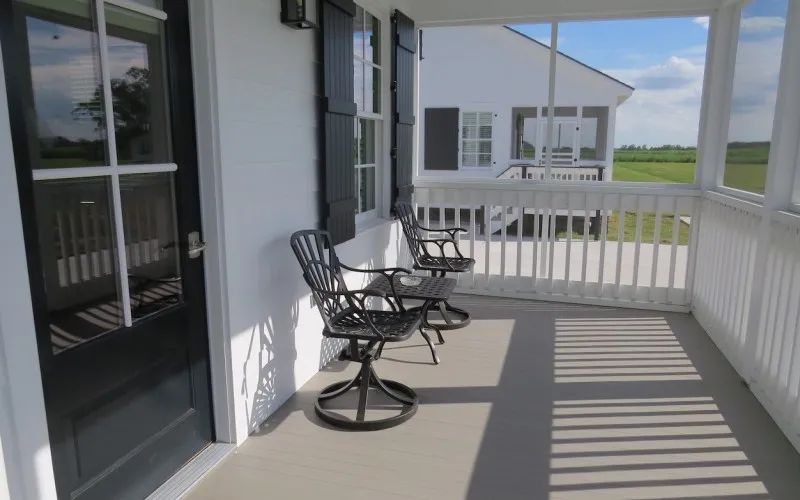
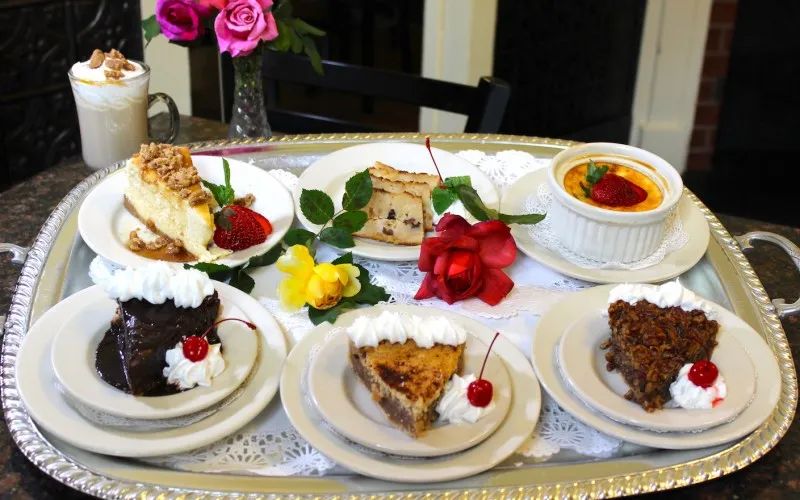
The Luxury Romantic Stay In an Oak Alley Cabin!
If you want an entirely new and unique perspective of Oak Alley, then stay in one of their cabins! It is a romantic way to experience the south. You can stroll around the Big House, see the Oak trees lit up at night and enjoy a large meal of Creole and Cajun food at their restaurant. Unwind on the porch of the cabin listening to the night time sounds of the Louisiana South. When you wake the next morning you will be greeted with a full country breakfast as you tour other areas of the Louisiana River Parishes or other plantations nearby.
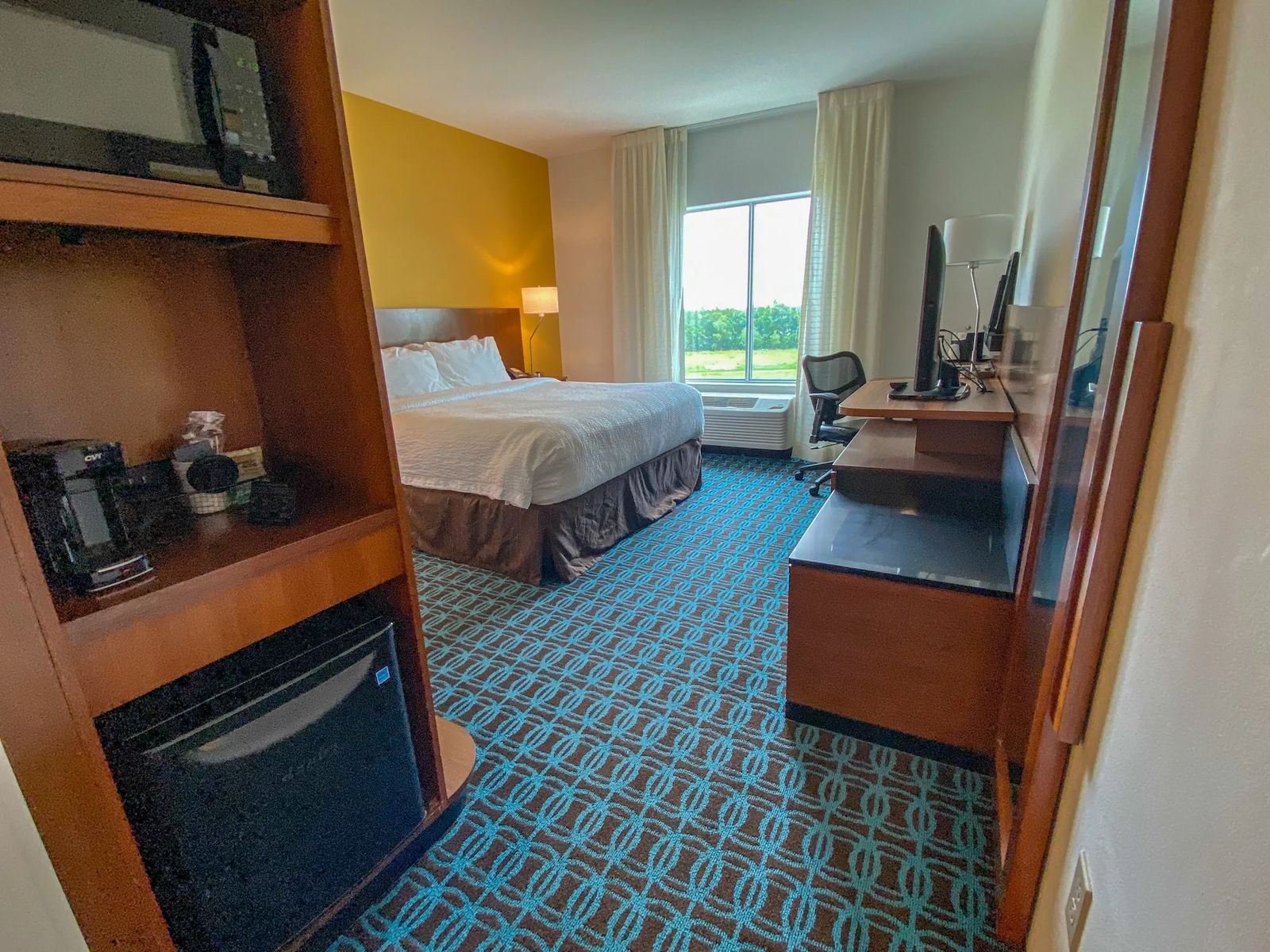

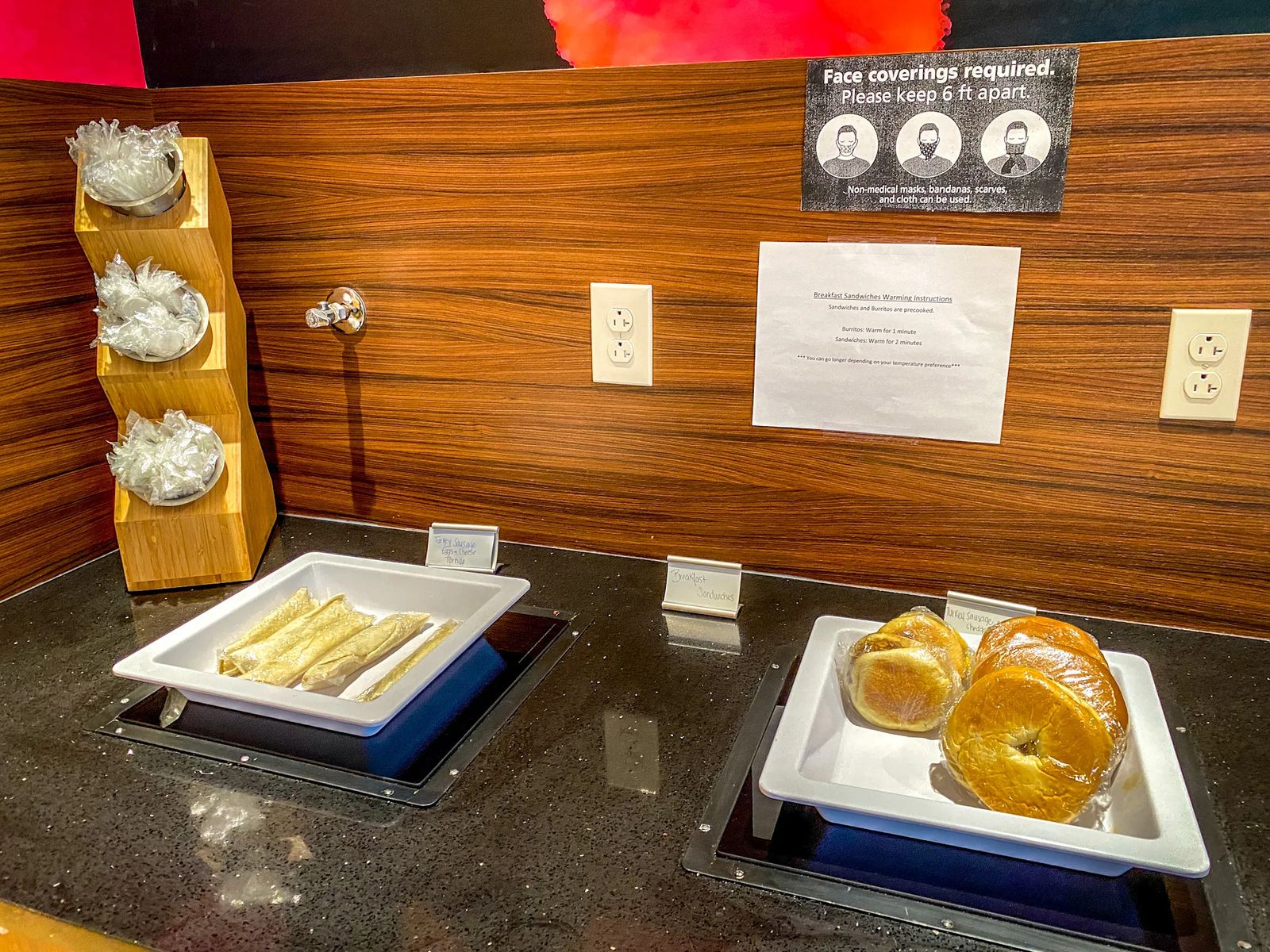

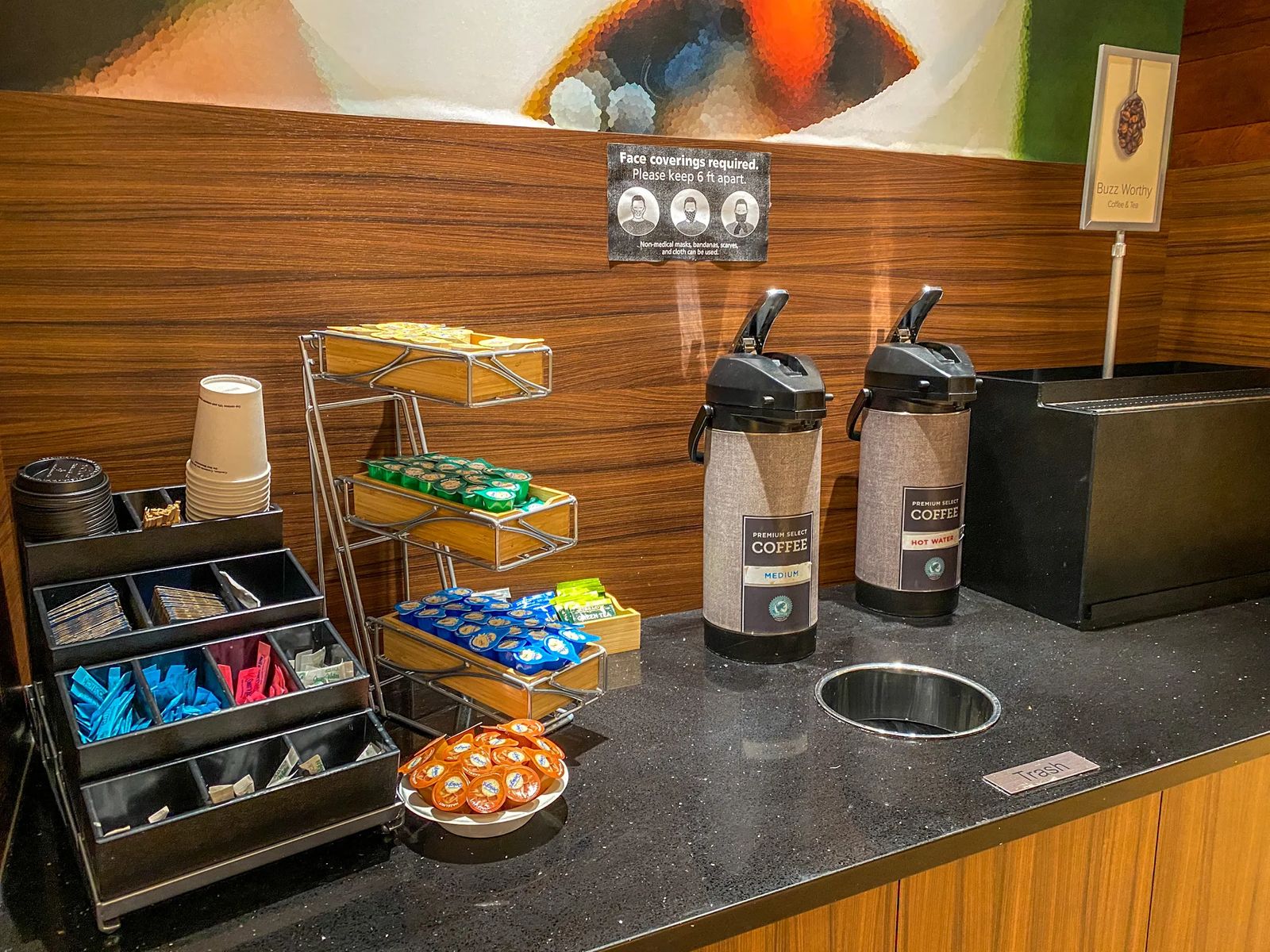

The Budget Friendly Stay in Fairfield Inn
While it isn't the Ritz, it is kind on the budget and one of the few traditional hotels in the Louisiana River Parishes. In fact, while I was staying here there was a large wedding party that stayed here as well. For me that is ALWAYS a good sign that you are choosing something budget friendly if entire families rent the place out.
The breakfast is adequate and there are snacks available for purchase at the reception desk. There isn't a bar or any store close by so make sure if you want a drink to unwind at night, you pack it in yourself. The room was comfortable, quiet, good Wifi, massive shower, and incredibly good AC with a view out over the field behind the hotel where I got to see Egrets searching for their food.

Why Is Oak Alley Famous?
Beyond the gorgeous Oak Alley, the plantation was also known for the successful grafting of Pecan trees by the Creole slave gardener Antoine. It resulted in the Centennial Pecan variety, which had softer shells that you could break with your hands instead of struggling to break the hard shell previously.
Although the successful grafting of the trees was attributed to the plantation, at 38 years old Antonie became worth a mere $1000 at that time for his success.

Building Oak Alley
Originally named Bon Sejour, in French this means 'have a good stay', but was also nicknamed Le Petite Versailles (as the rumor goes, the owner was trying to keep up with his brother in France). It was built in the Greek Revival style, with 28 Doric columns, sweeping verandas to capture the breeze on hot summer afternoons in Louisiana.
Built in 1837 by George Swainey from Joseph Piliés design and African Slaves that did much of the construction work with the home being completed in only two years. The quality of craftsmanship allowed the home to withstand many hurricanes in the area. There are 28 Tuscan style columns and a widow's walk atop the home.
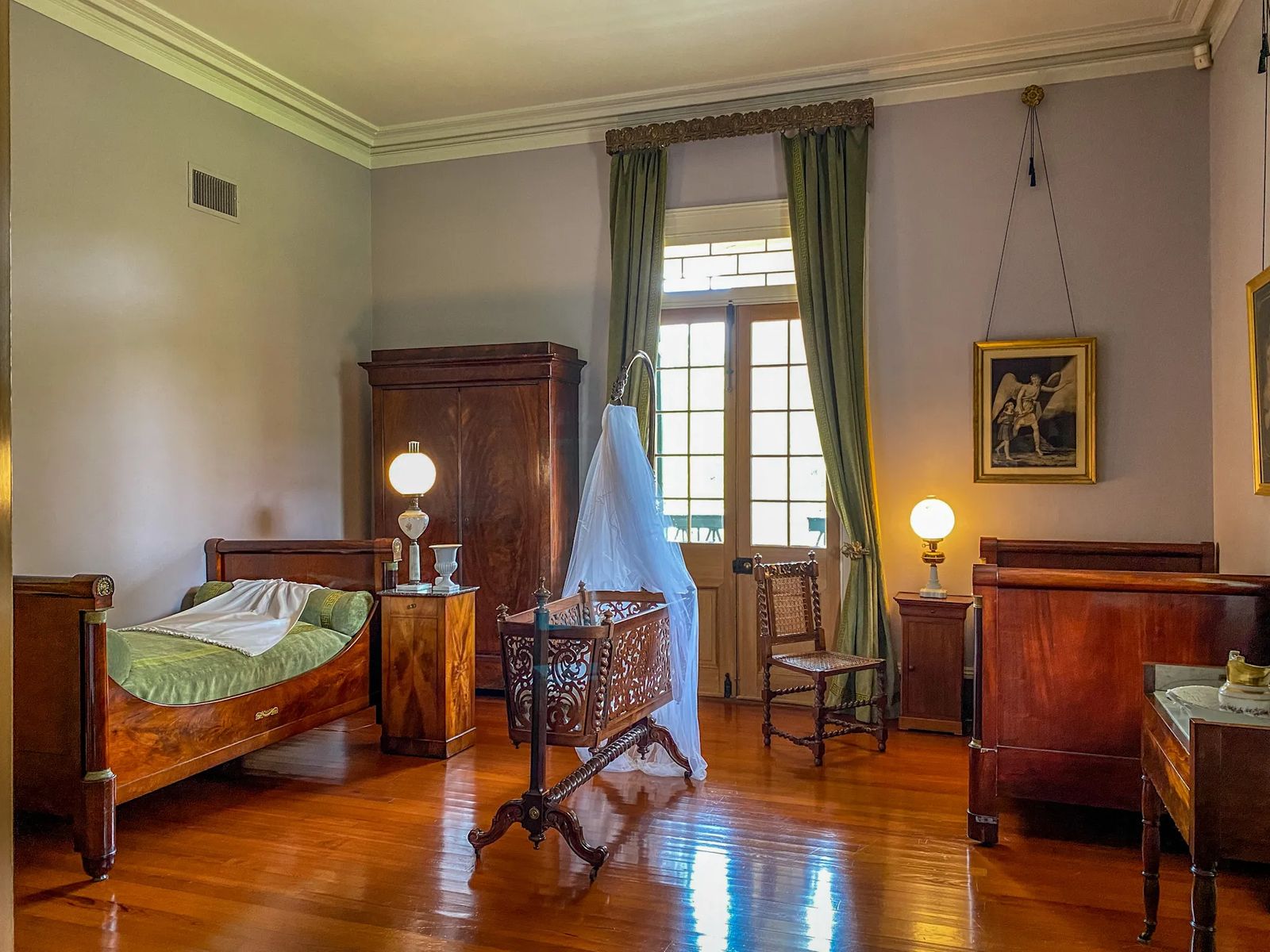
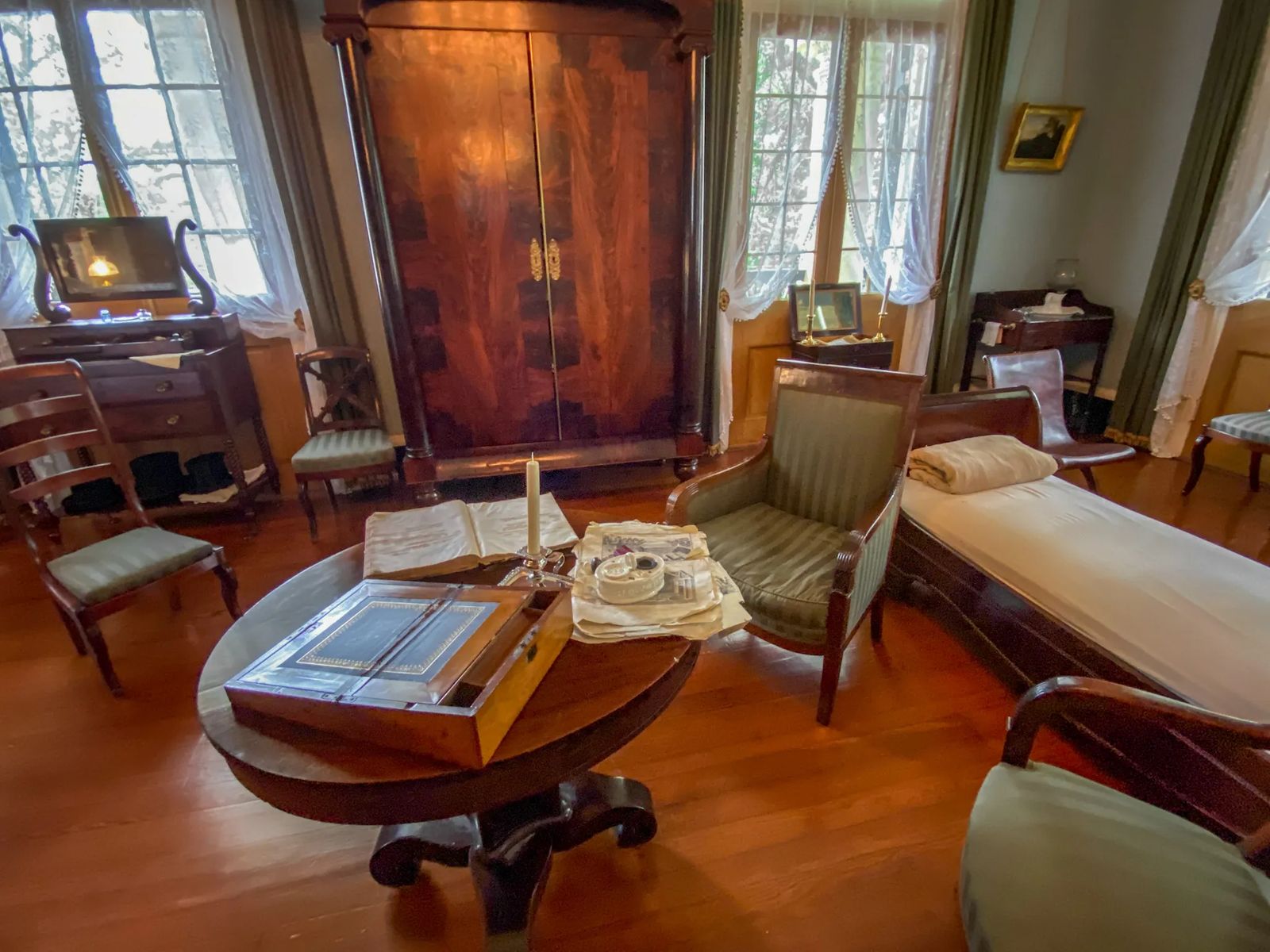

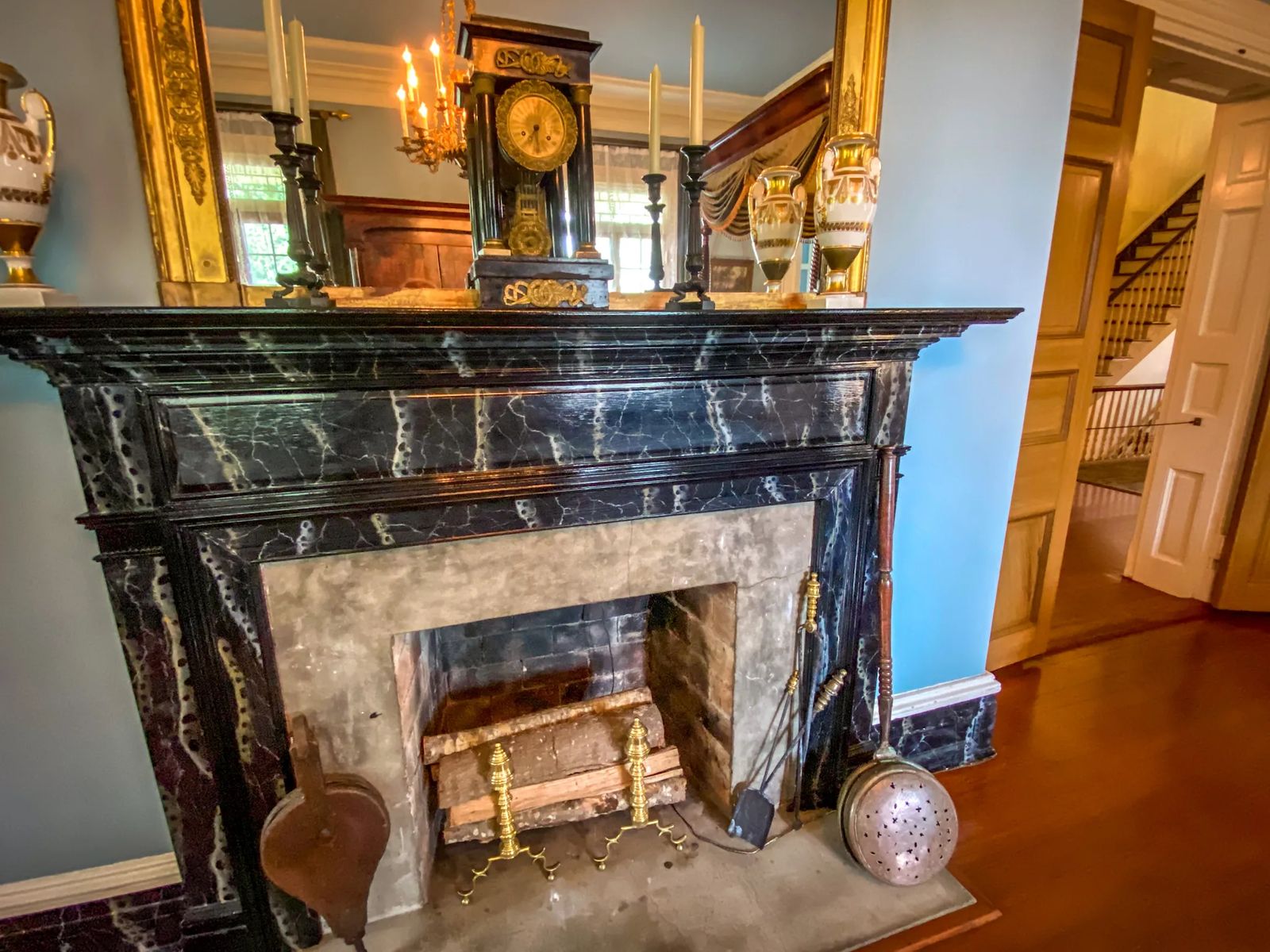
Once you enter the home you are greeted by a 22 steep staircase, large high ceiling hallways and rooms. There are doors at each end that I imagine would be open on those hot summer days. It is estimated that there were approximately 120 slaves at a time at this plantation, but the owner was highly involved in the slave trade, a 3 billion dollar industry at the time (12 Trillion today).

The staircase you see today wasn't originally there but was placed after the Stewarts restored the home and made it easier to access the second floor. The original staircases were two spiral staircases at either end of the home.
The Dining Room has two large doors that has a long dining table set as if it would feed a grand party. You will notice a shufly fan over the table that often doubled as the A/C of the home. The fan is connected to a rope that ends in the corner, where a slave child would pull the rope for the entire dinner that they were not allowed to eat. Inside of the fan there was often a jar filled with honey to catch the flys and would be covered with a handkerchief so the guests wouldn't have to see the flys.
The Living Room was where the family would gather and once the daughters would have their debut, courtiers would come to call. There is a courtier candle that was used by the father to indicate when the young man had to leave. If he liked the young chap, the candle would be turned all the way up, if he didn't like him, the candle would be turned down to a lower level indicating he had very little time.

There are a few other rooms on the main floor with Civil War displays and other artifacts that contribute to the story of Oak Alley. They have you tour until you can go upstairs.
After climbing the steep 22 steps to the second floor you enter the hallway of bedrooms. There was a master bedroom, a guest room, an infirmary, children's rooms, and a mourning room.
After you tour the bedrooms and learn about Josephine Stewart and see her room just as she had left it, you exit to the veranda. If you come in April you will be able to see the giant Magnolia tree bloom before the flowers turn brown in the summer heat. It also gives you an elevated perspective and great place to take photos against the backdrop of the Oak Alley.
The home itself was listed on the National Register of Historic Places in 1978 and functions as a museum and inn now.
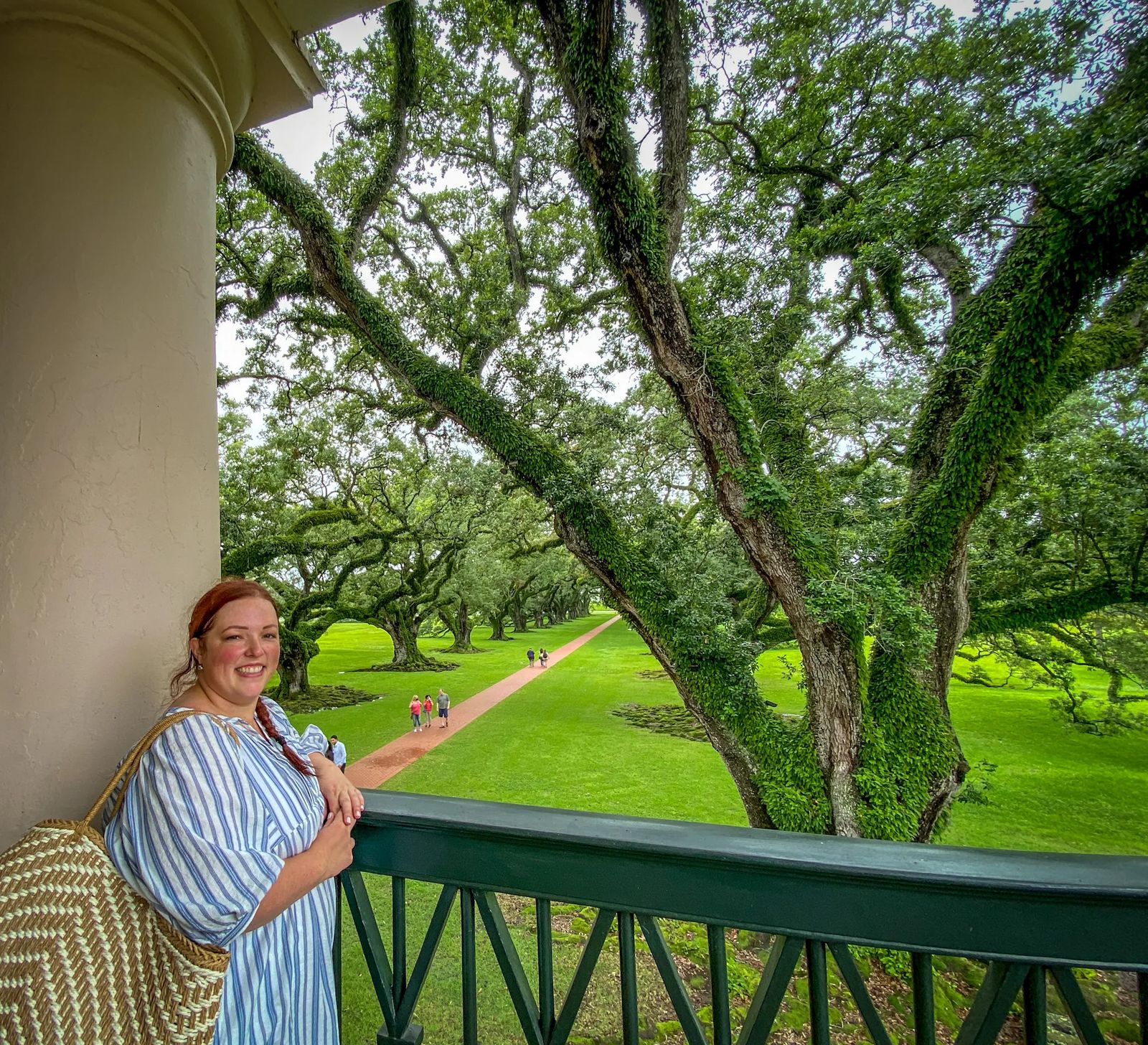
The Oak Trees At Oak Alley
The trees are estimated to be 300 years old, but not all the trees were originally planted when the house was built. You can tell because of where the original dirt road was, and where it is now. The staff estimates that several trees that extended the Oak Alley were imported and replanted here.
Oak Alley is famous for the line of 28 live Oak Trees that line the walkway to the Big House. Each of the 28 trees have names and are dedicated to the people who are tied to the home. The height of the tallest tree is 88.5 feet height, and spreads out to 132 feet in width, and the trunk of the tree is 18'6". The widest spread of any tree at Oak alley is 154 feet.
Needless to say you feel very small walking under these giant Oak Trees that feel as if they could reach out and grab you like a fairytale. The best time to see the Oak Alley is in Spring and Fall because in Spring the rain brings out the green and the moss blossoms. In the Fall the colors turn brilliant oranges and yellows along the 800 feet of this gorgeous walkway.

Oak Alley Owners
Valcour Aime purchased the land in 1830 and was known as the 'king of sugar', as sugar was considered 'white gold' of the time. He was one of the most wealthy men of the south until 1836, he exchanged Oak alley to his brother-in-law Jacques Telesphore Roman.
Jacques was the brother of Andre Roman who was the governor of Louisiana twice. Jacques didn't live long, and passed away in 1848 leaving the running of the plantation to Marie Therese Josephine Celina Pile Roman. Women, at the time, were not formally educated in how to run a business, they were mostly educated in how to throw parties and run the internal affairs of the home to help bolster their position in society.
As Marie whittled away at the family fortune, she realized she was in trouble and handed the plantation over to her son Henri to try and save the plantation from ruin. He took control in 1859 but eventually they went bankrupt and had to leave their home.
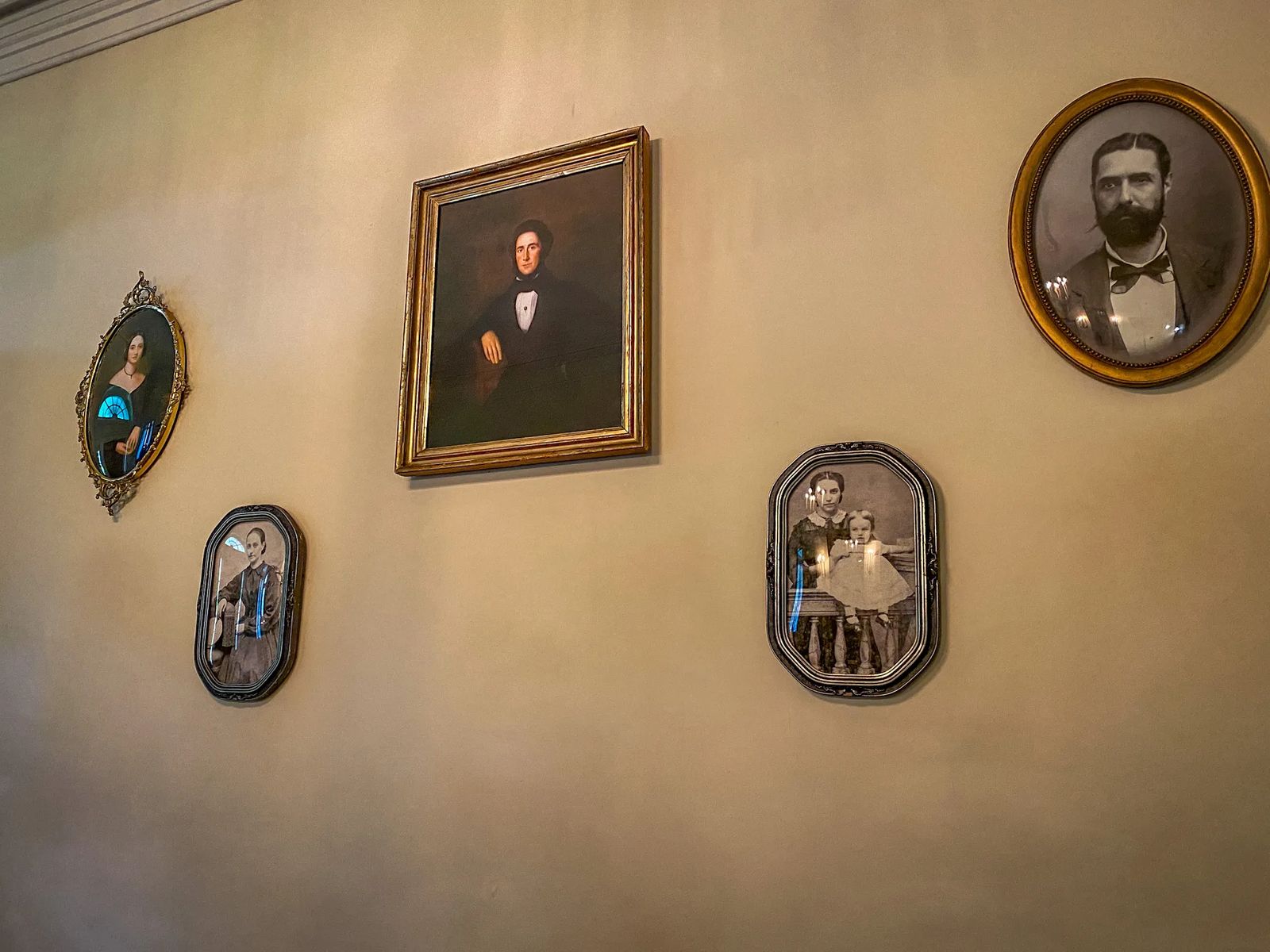
The house was eventually sold at auction in 1866 to John Armstrong for $32,800. After a series of debts, bankruptcies and inability to upkeep the plantation after the Civil War the home fell into disrepair in the 1920's.
A virus wiped out the sugarcane crops across the region in the mid 1900's and was bought by the Andrew and Josephine Stewart in 1925. They hired a master architect, Richard Koch, who did an extensive restoration on the home (some of his calculations can still be seen scribbled on doors and walls).
They lived on the property and modernized it to what it looks like today and is much of the reason that the property still survives. Josephine lived here until 1972 until she created the Oak Alley foundation and gifted the property to the foundation to continue to be run and tells its history to this day.
You can still see a Roman family tombstone near the home, made completely of marble. The Steward family graveyard also still resides on the property as well.
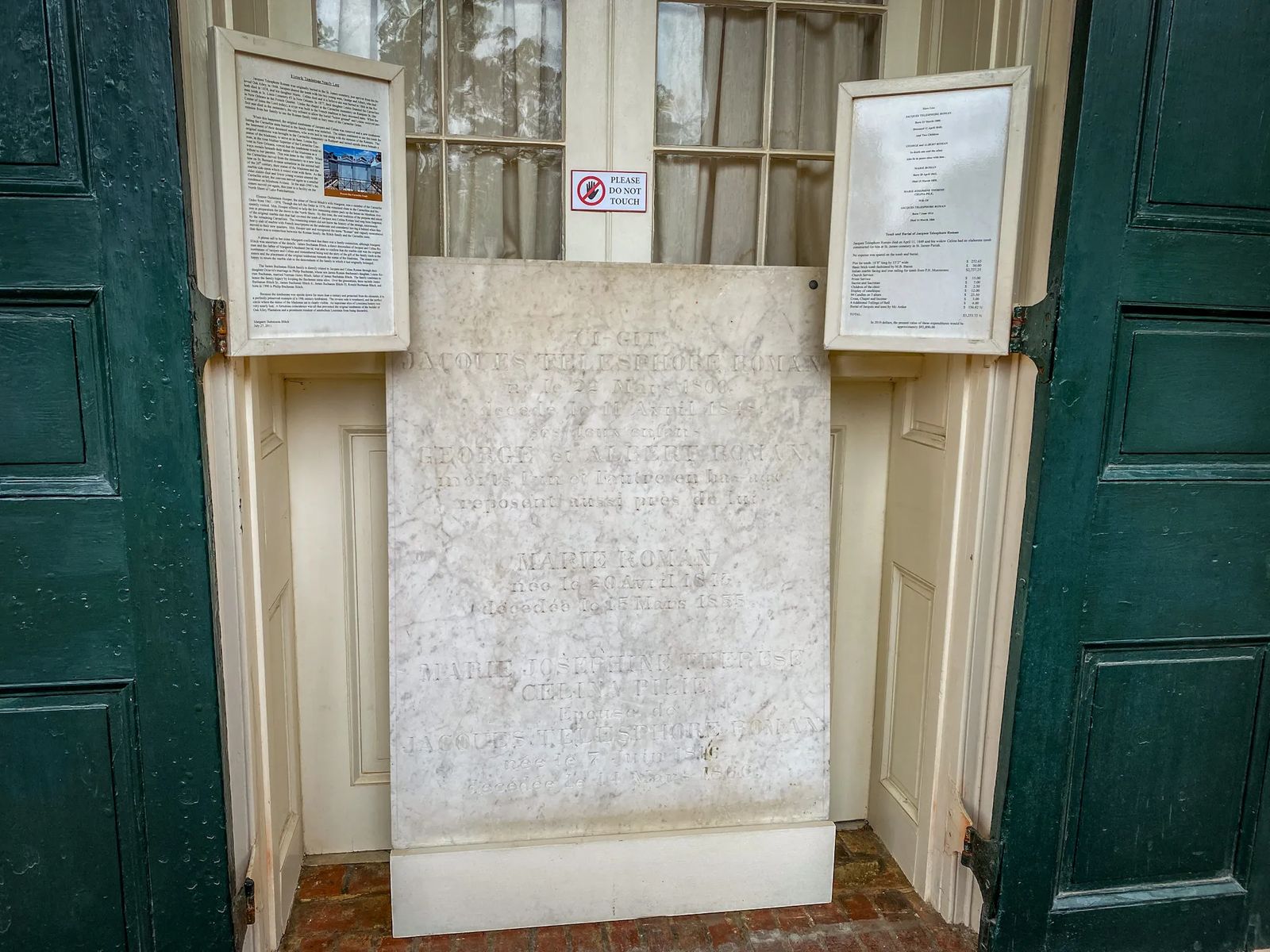
Modern Day Oak Alley
Today Oak Alley is a tourist, cruise ship bus hot spot and can get quite crowded so be sure to go early or in the Fall to ensure you will be able to see it at your leisure. The Big House has guided tours, with a limited number of guests allowed per tour. I suggest buying your ticket in advance to ensure you are able to take a tour.
The Big House tour is quite informative, telling little tidbits about the house, the owners, and the slaves that worked within it that you won't find all over the internet.
They do allow the famous Mint Juleps to sip on when you enter the house, but make sure you do have your ID with you to purchase one. For those not familiar with Mint Juleps it is a drink that originated in Kentucky with the Kentucky Derby, and is not native to the Louisiana South but because of Hollywood and romanticising them they are now included at Oak Alley. It is a concoction of simple syrup, fresh ground mint, crushed ice, a splash of water, and 2 oz of bourbon with a mint garnish. They also have non-alcoholic versions available.
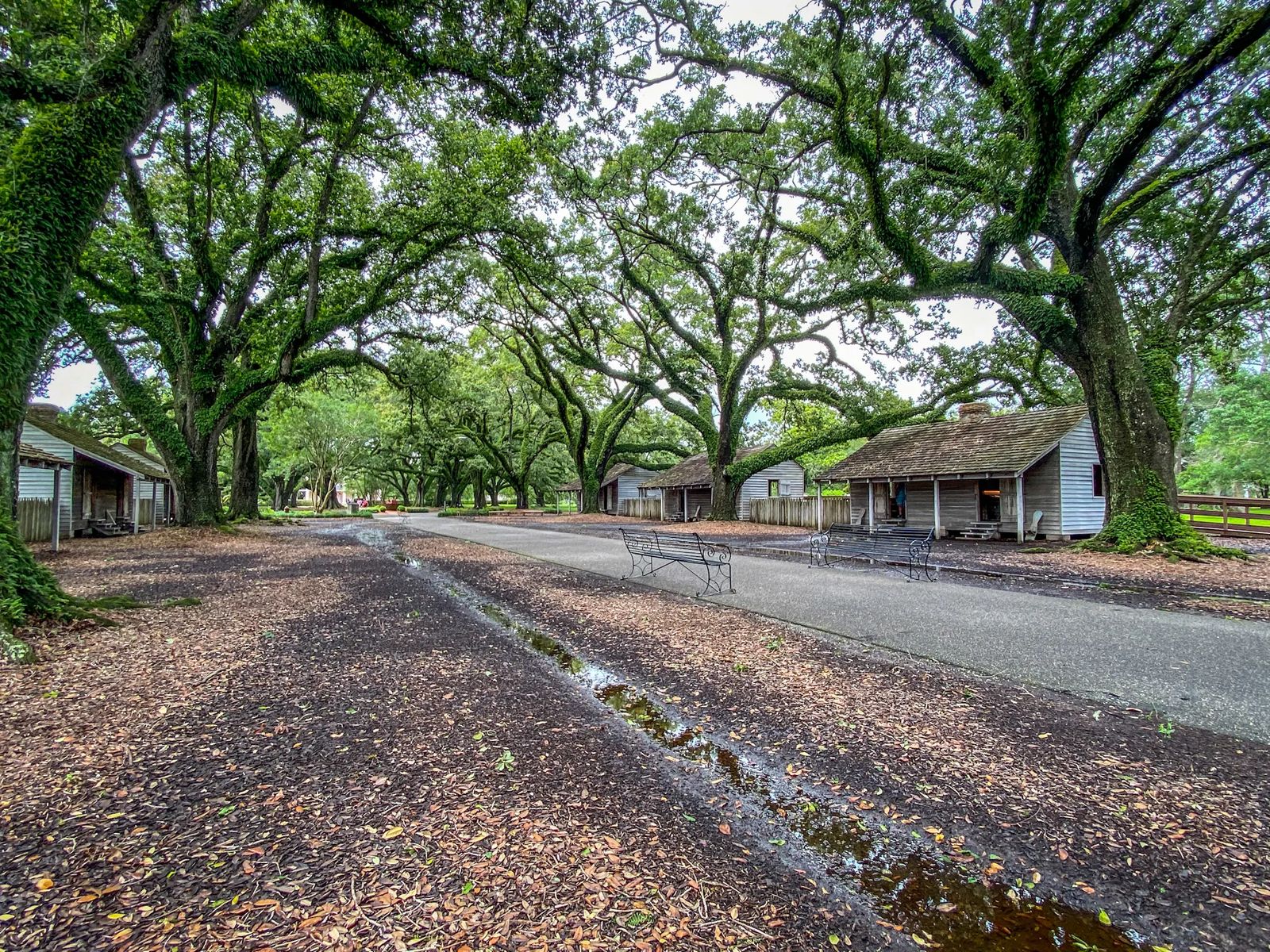
Slave Quarters
Archeological research was done at Oak Alley and surprisingly found foundations of small cabins where the original slave cabins were built. After this discovery there were 24 slave cabins reconstructed on the original footprint in what is now known as slave quarters alleyway.
The slave cabins now house exhibits of what the daily lives of the slaves would look like. It goes through the life of a house slave, a field slave, and a blacksmith slave. They take you through how they would do laundry, make sugar cane, and what limited resources they were offered if they would become ill. Even when the slaves would cut their leg or arm with the machetes used to cut the sugar cane, they were often 'treated' by brutal field medical doctors from the army.
It also takes you through what punishment looked like for the slaves, how women were bred with strong males to create even stronger slaves. Some of the tour is not for the faint at heart, but I think when we look at the history of the south it is extremely important to educated ourselves not just on the architecture but also the horrid conditions and lives of the slaves and what they endured.
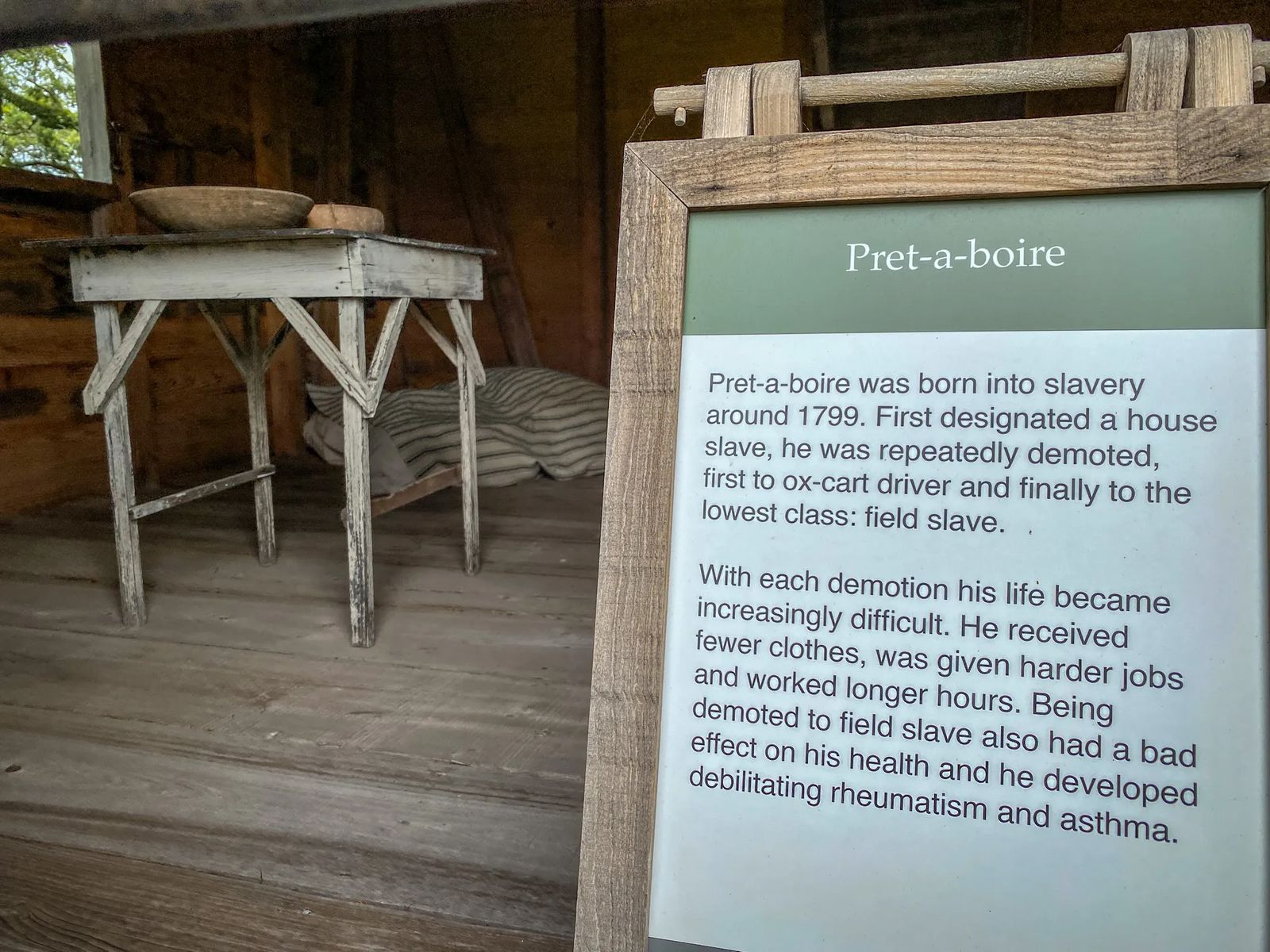
They also discovered a blacksmith cabin which was also reconstructed around the remains of the original Civil War encampment.
There is an interesting story of one of the owners, Nanette Fortin, who owned a slave named Celestine Daret. When Nanette died, they found that she had given her entire savings to Celestine, as well as Aimee Roman. Why is this interesting? Well because it virtually put Celestine on the same footing as the people she once called her 'masters'.
Once the Union took possession of Oak Alley some slaves ran away, others were enlisted into the Union Army and promised a 'stipend', others changed their name completely.
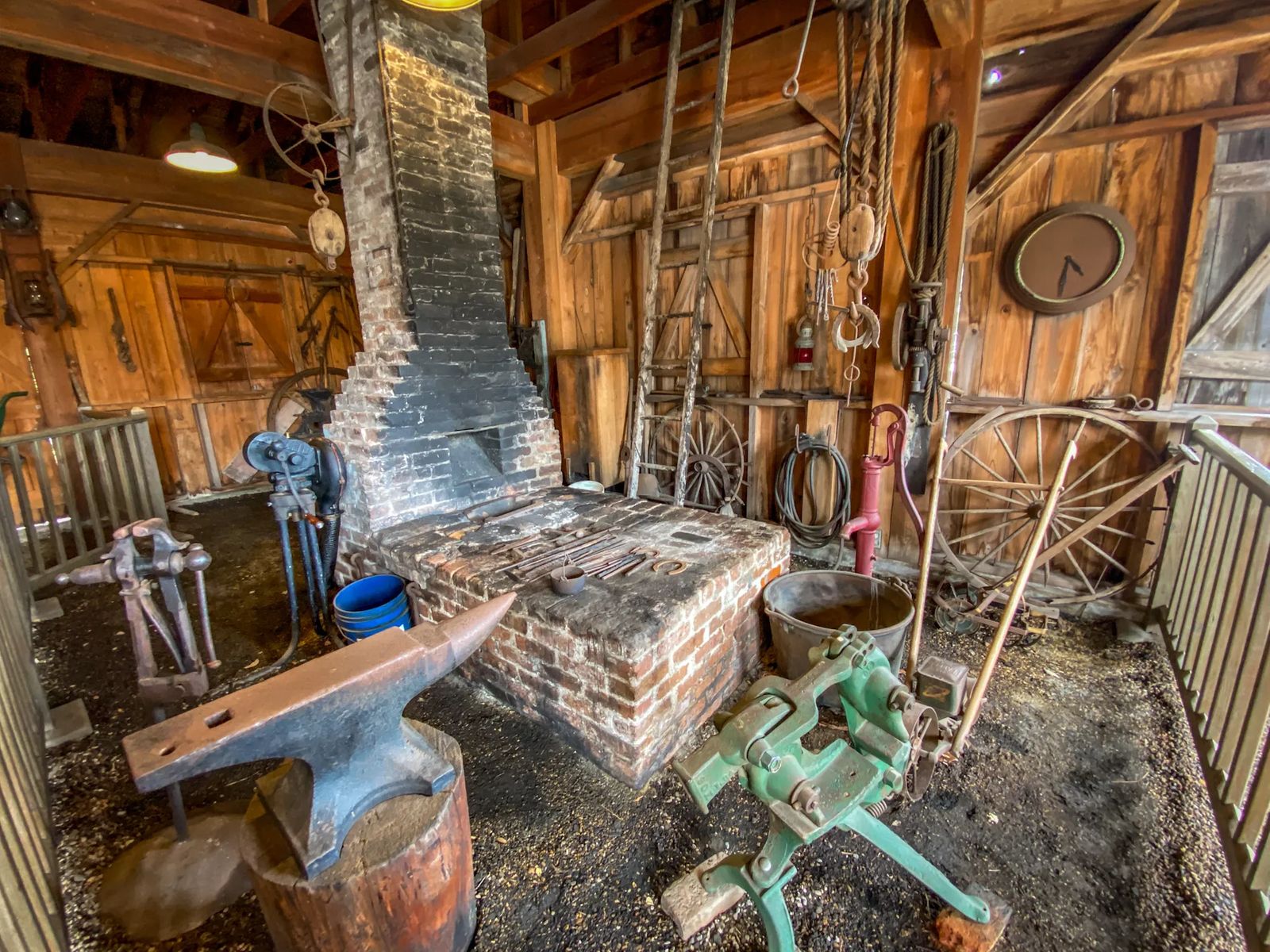
After the Civil War, there were many slaves who only spoke French here, like their former masters. They didn't have anywhere else to go, so many of them stayed on the plantation. In fact there were slave descendents living in squalid conditions here up until the 20th century.
I would suggest to allow yourself at least an hour and a half to see the slave exhibit. They do have historical interpreters who will answer many of the questions you may have about slavery that do tours at intervals.
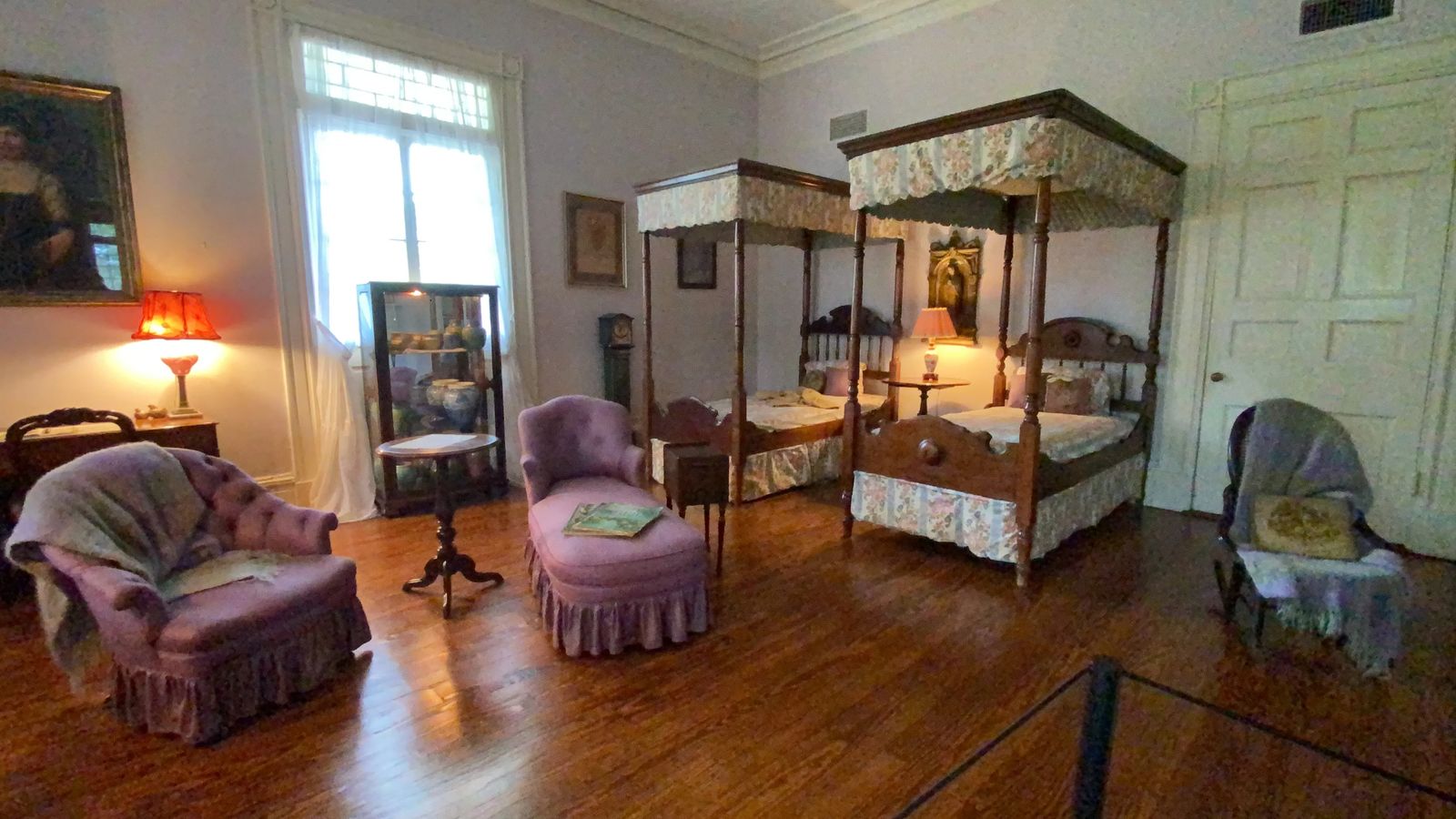
Paranormal Activity At Oak Alley
This plantation, like many others in the area, all have their own paranormal activities. Oak Alley has a whole section on their website about stories they have collected about the paranormal happenings here.
The stories include chairs rocking on their own, objects that mysteriously fly across the room. They admit that the plantation home has two resident ghosts, one of which they think is Mrs Stewart herself. There is also rumor of another man who wears grey boots that has been seen on the property. Also the sounds of carriages driving up the plantation gravel road toward the house but nothing ever arrives.
Ghost Hunters actually came to Oak Alley in Season 4 Episode 19, where flying candles were seen, as well as unearthly voices mourning.
One encounter came from the assistant house manger and her daughter, who specifically recall turning all the lights off in the home. As they were leaving, they turned to look back at the house and saw a light was on in the Lavender room (Mrs Stewarts old room) with a shadowy figure resembling Mrs Steward herself. They recall racing to their cars, and as they were driving away, all the windows were dark again.

Dining At Oak Alley
Enjoy Cajun culinary delicacies at the Oak Alley Plantation Restaurant. They do take walk-ins and are open from 8:30am-3pm daily. You can choose from appetizers like fried green tomatoes, spinach and artichoke dip, and fish and chips. Have something uniquely cajun like a Gumbo, or one of their sandwiches and salads available.
For those staying for breakfast or want to eat breakfast there, they have continental breakfasts, full breakfast with bacon, biscuit and grits, or a plantation omelette, crawfish omelette, Pain Perdu (a cajun french toast), a breakfast croissant and they even have a children's breakfast.
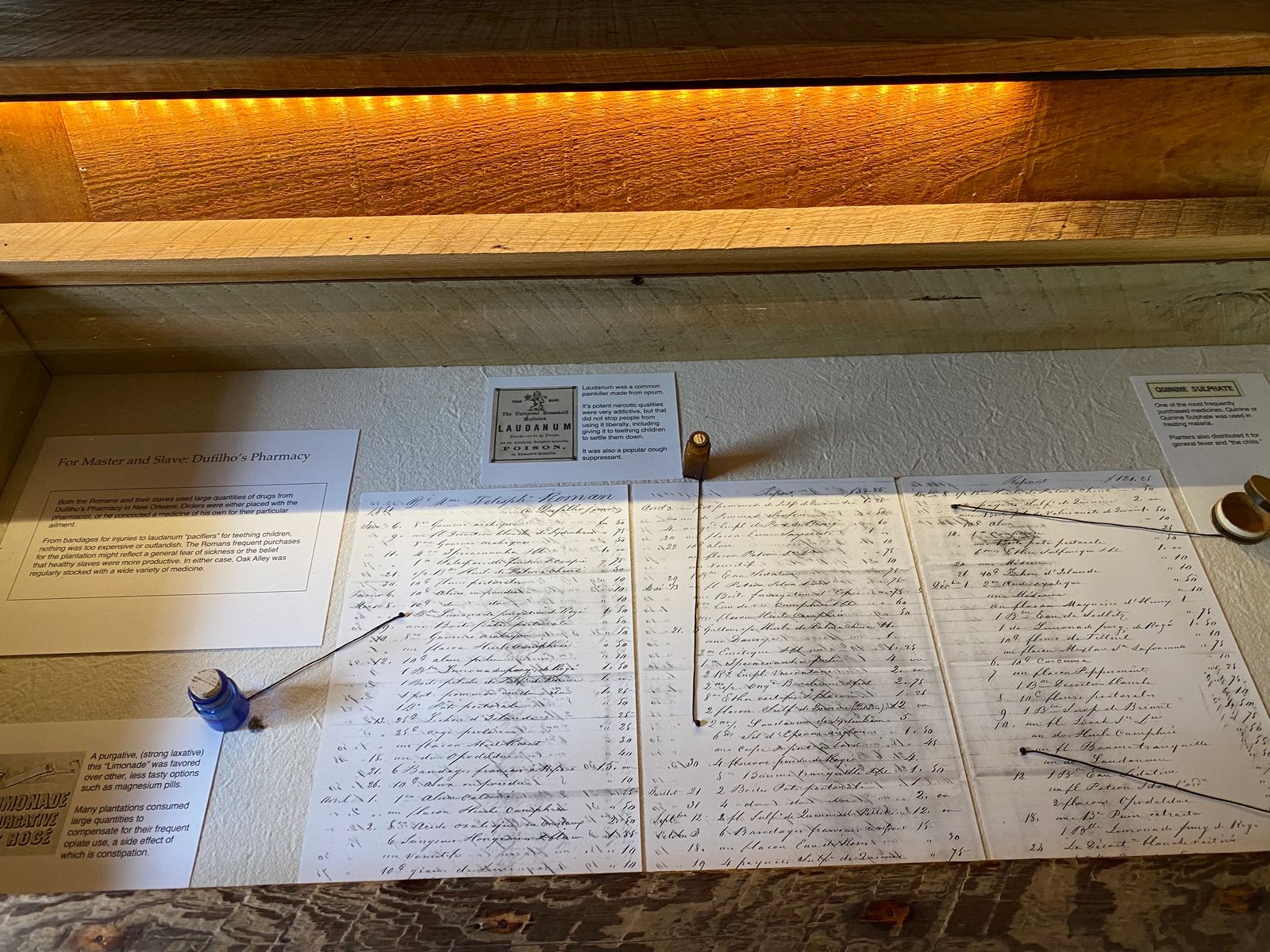
Best Tours For Oak Alley
There are several tours available to Oak Alley and other plantations in the area. The tours are often combined with other activities, so if you want to spend more leisurely time exploring Oak Alley you do have the option of renting your own car.
There is a tour that you can visit BOTH Oak Alley and the Laura Plantation in one day, or you can tour Oak Alley and do a Swamp Tour. Both of these tours are through Viator and I personally find they are reliable and the customer service is great. Please let me know below in the comments if you have experienced something different.
If you ONLY want to do Oak Alley and do it on your own, then there is also the Grayline Bus tour that takes you ONLY to Oak Alley and is around 4.5 hours long. There is an option to buy a Laura Plantation Tour but I would call to see if you could combine them.
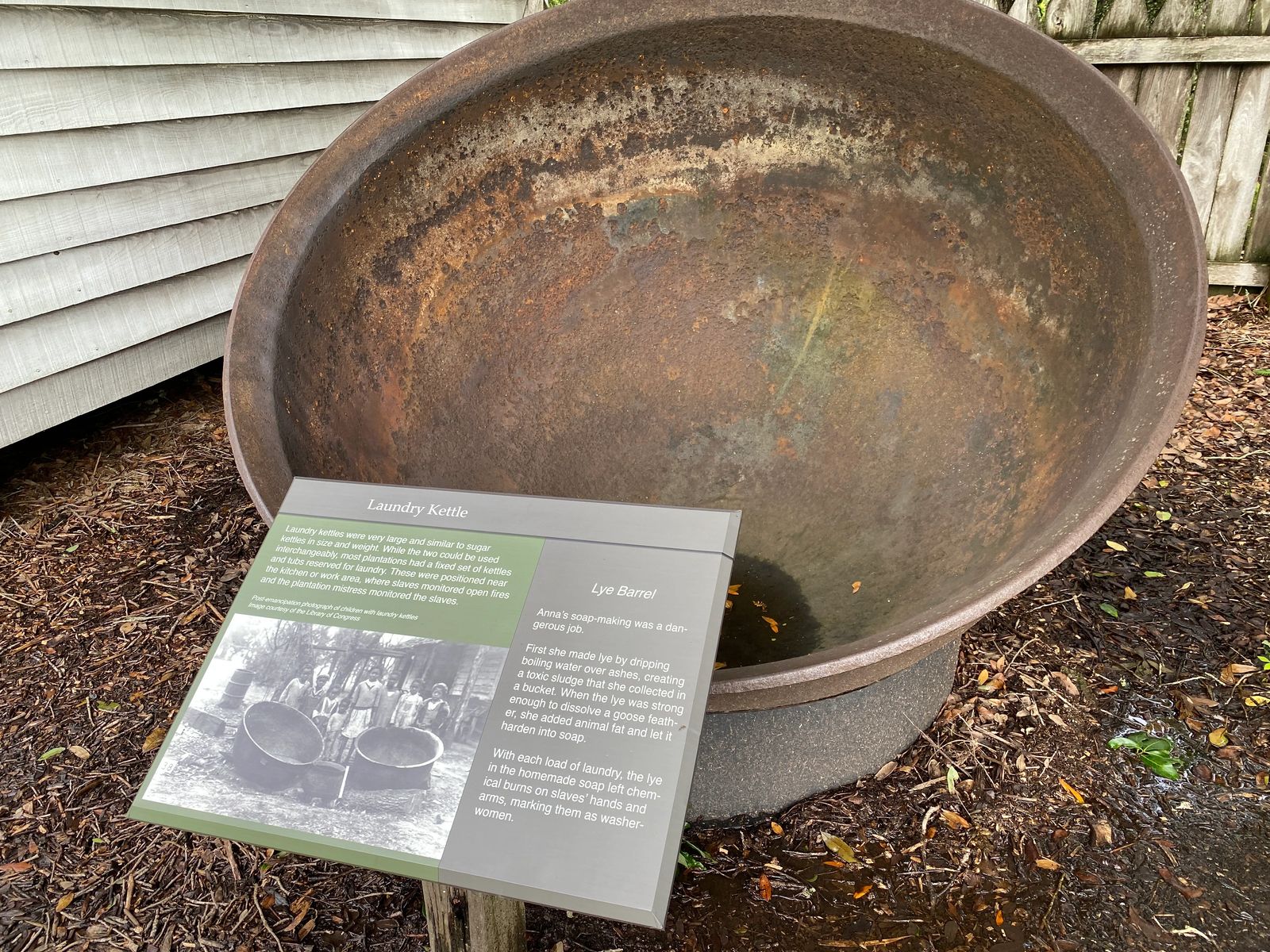
Oak Alley Tour Takeaway - What I would have Done Different.....
If I was to do Oak Alley over again, I would have stayed a night in their cabins to listen to the night time sounds of Louisiana away from the hustle and bustle of New Orleans. Strolling past the lit up Oak Trees, and maybe capturing stars twinkling between their ancient branches. Waking up to the sun cresting the horizon as I sip my coffee, imagining what it must have been like for the slaves that worked the fields to never have a break or coffee to get their day going.
I would have allowed myself more time to explore and really read the stories of the slaves here. Talk to staff and why they are so passionate about working at Oak Alley.
Yet, being able to visit Oak Alley, speak to the interpretive historian, be able to film some of the interior of the home with special permission from the House Manager. I will be forever grateful I was allowed to witness a piece of history and albeit man-made, the Oak trees tell a story all of their own. I went with an open heart and mind and came out of Oak Alley with a new appreciation and grateful heart that the history of this place is being told in a more balanced way - more than ever before.
Would I go back? Absolutely....
Like it? Pin it! Sharing is Caring ;)
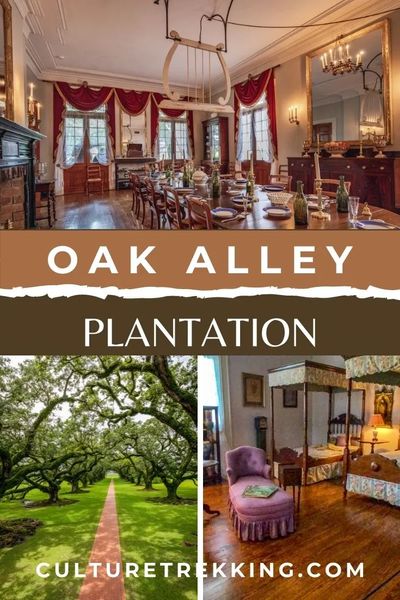.jpg?fit=outside&w=1600)
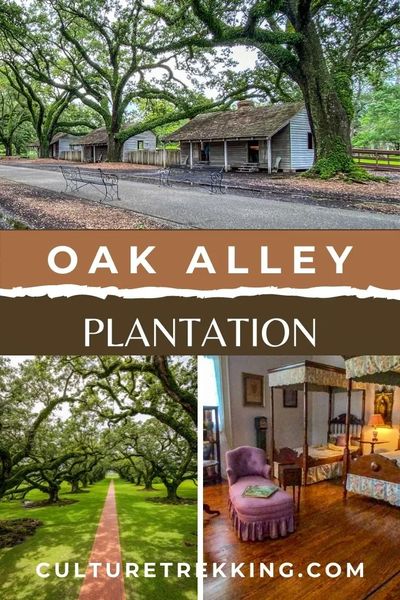.jpg?fit=outside&w=1600)
.jpg?fit=outside&w=1600)
.jpg?fit=outside&w=1600)
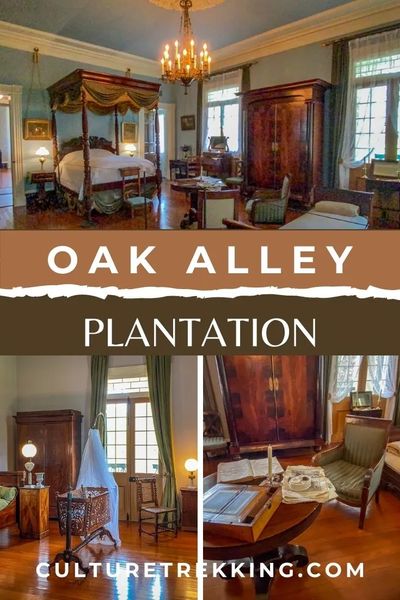.jpg?fit=outside&w=1600)
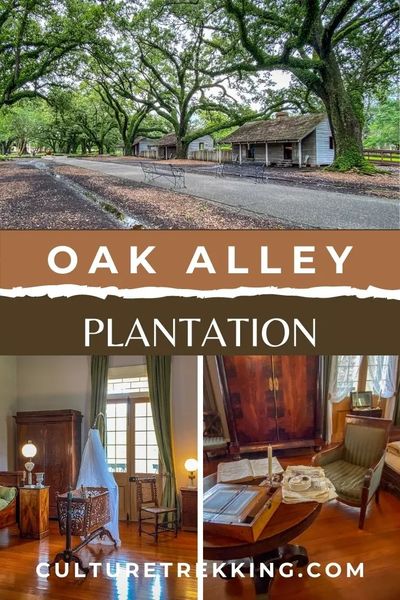.jpg?fit=outside&w=1600)

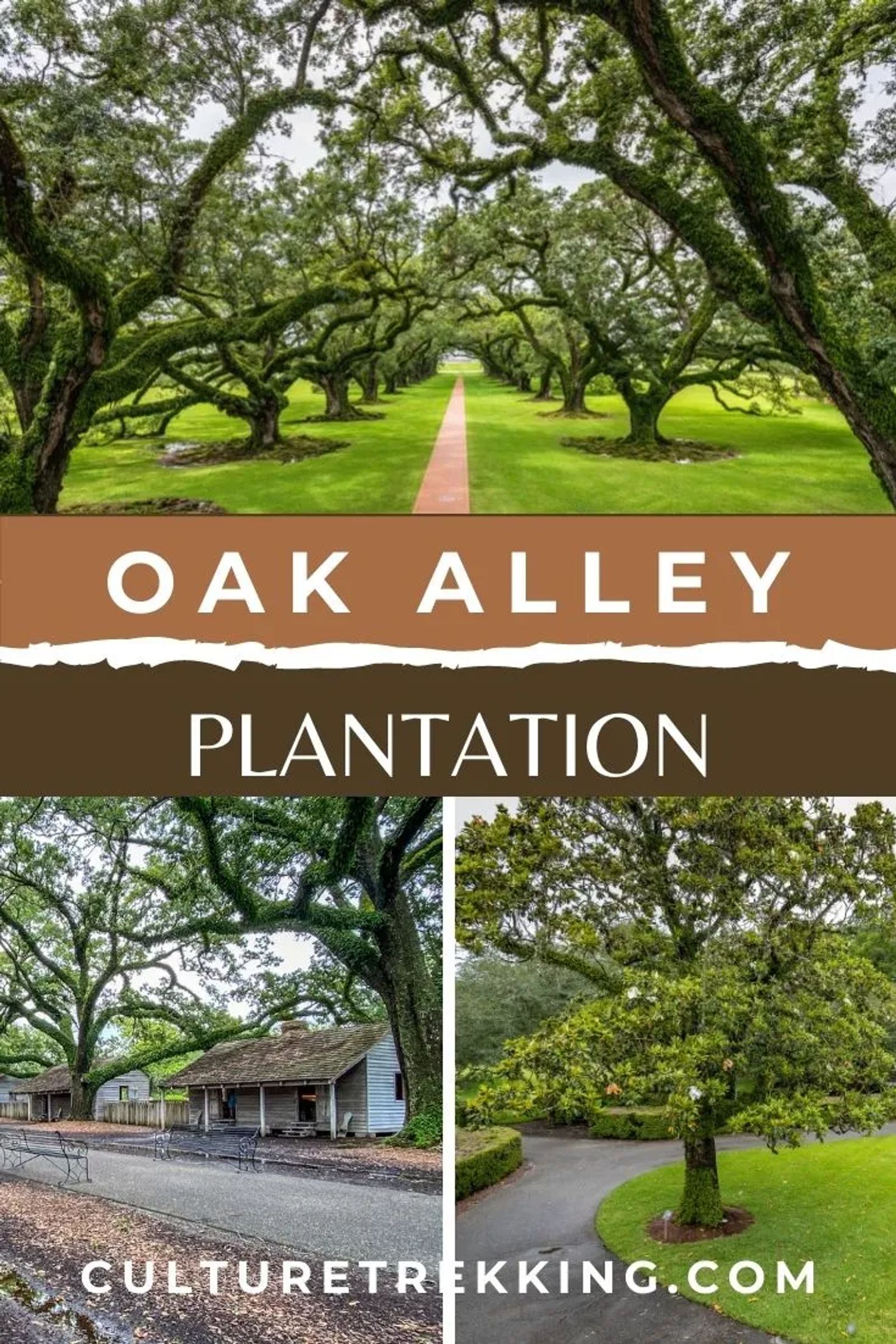

Latest Articles On Culture Trekking


Welcome to Culture Trekking!
My name is Janiel, I specialize in solo female travel, cultural connections, sustainable adventures, food and history to help make your travel experiences fun, meaningful, and delicious. My experience in travel, and my personal story have allowed me to get published in Fodor's Travel, Atlas Obscura, Metro.co.uk, Trip Advisor, and multiple Podcast interviews. You can find me on pretty much every social media channel YouTube, Instagram, Twitter, Facebook, Pinterest, TikTok. To read more about me and my story click here. If you are a brand and would like to work with me, click here.















